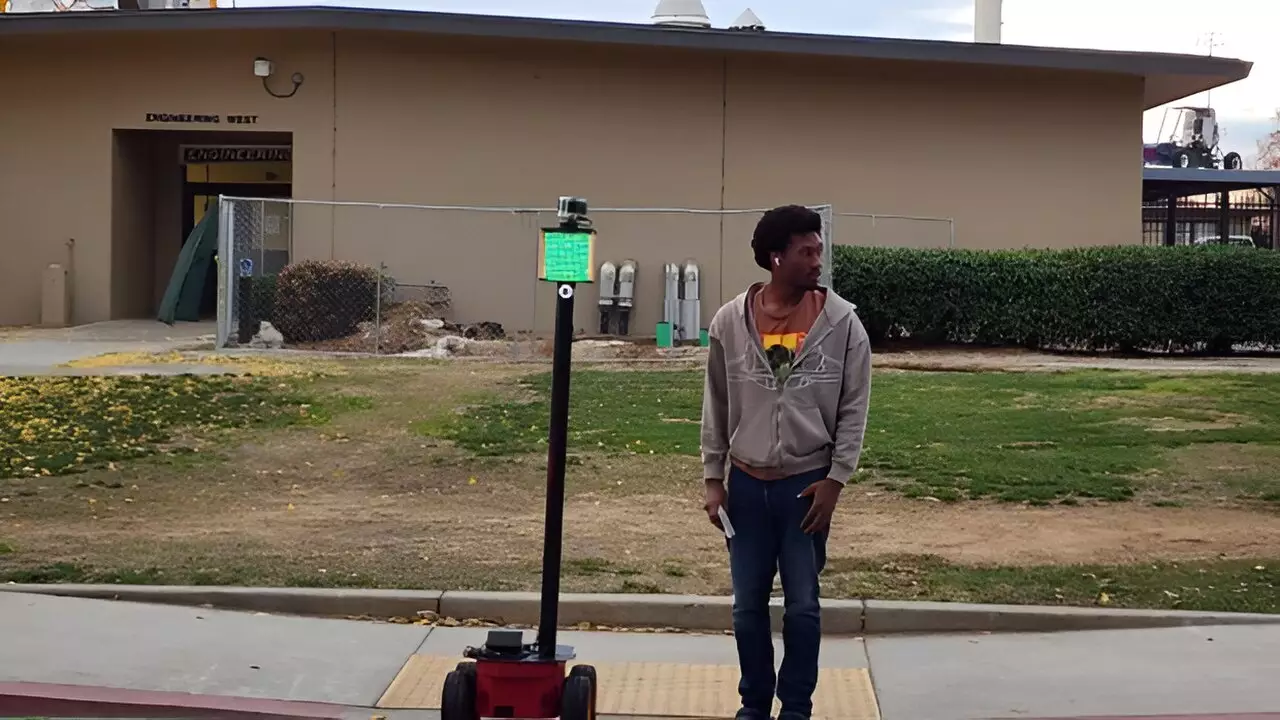Picture this: a robot, equipped with state-of-the-art sensors and advanced algorithms, standing guard at a busy crosswalk, ensuring the safety of children as they make their way to school. This is the vision of Hovannes Kulhandjian, an associate professor in electrical and computer engineering at Fresno State, who has created a prototype known as CrossBot. With its 360-degree view of the environment and the ability to detect vehicles, cyclists, and pedestrians with over 90% accuracy, CrossBot aims to address the shortage of crossing guards in the Bay Area and provide a reliable solution for child safety.
While the concept of a robotic crossing guard may seem innovative and promising, not every parent is on board with the idea. Some parents, like Kelly Lathrop of Lafayette, express concerns about the reliability of a robot compared to a human crossing guard. They worry about potential malfunctions or hacking incidents that could jeopardize the safety of children. Others, like Angela Roberts, acknowledge the turnover and shortage of human crossing guards in school districts but question whether a robot can truly replace the human touch and connection that crossing guards provide to students and families.
Despite the apprehensions raised by some parents, the shortage of crossing guards in the Bay Area and the increasing pedestrian-related accidents highlight the urgent need for innovative solutions. According to reports from various school districts, the distance learning challenges during the pandemic led to many crossing guards being displaced or not returning to their jobs, further exacerbating the shortage. With accidents being the second-leading cause of death for children under 14, the implementation of robotic crossing guards could offer a viable solution to ensure child safety on the streets.
Robots have become integral parts of various industries and sectors, performing tasks ranging from transportation and delivery to inspection and security. The global robotics market is projected to reach nearly $96 billion by 2029, indicating the widespread adoption of robotic technologies across different domains. Kulhandjian’s CrossBot is a testament to the expanding role of robots in addressing real-world challenges and complementing human efforts, rather than replacing them entirely.
While Kulhandjian emphasizes that CrossBot is designed to enhance human efforts and not replace them, the potential benefits of robotic crossing guards cannot be overlooked. With the ability to provide consistent and accurate safety measures at crosswalks, robots like CrossBot could fill crucial gaps in regions where there is a shortage of human crossing guards or during times when staffing is limited. By striking a balance between technological advancements and human presence, the concept of robotic crossing guards opens up new possibilities for improving safety on the streets.
The introduction of robotic crossing guards such as CrossBot represents a significant step towards ensuring the safety of children and pedestrians in busy urban environments. While there are valid concerns and criticisms surrounding the reliability and human touch of robots compared to human crossing guards, the pressing need for innovative solutions in the face of crossing guard shortages and increasing pedestrian-related accidents cannot be ignored. By embracing the synergy between technology and human intervention, the rise of the robotic crossing guard may herald a new era of safety and protection on our streets.


Leave a Reply